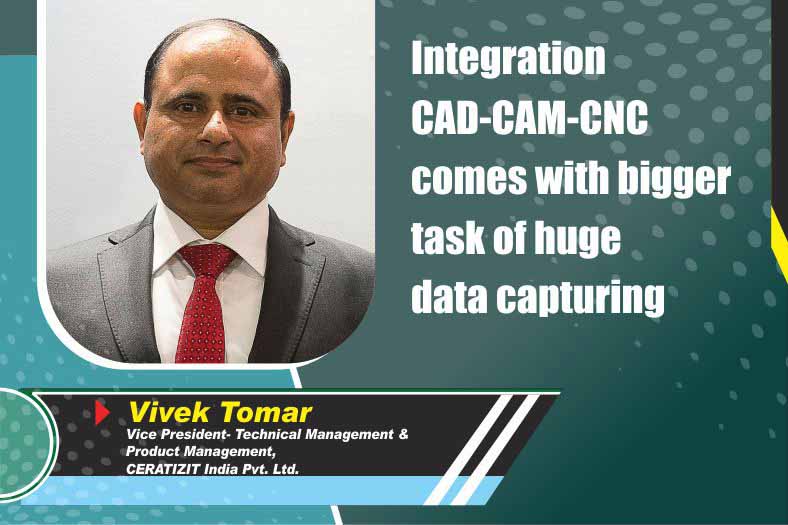Integration CAD-CAM-CNC comes with bigger task of huge data capturing
By OEM Update Editorial March 1, 2022 7:17 pm IST
To reduce carbon footprint and increase overall energy efficiency it’s imperative to reduce machining time and power consumption at the shop floor.
Talking about future roles for CAD and CAM for machine tools market growth post budget, Vivek Tomar, Vice President- Technical Management & Product Management, CERATIZIT India Pvt. Ltd., remarks, there are two major milestones or agendas which stand out in post budget.
- Green Energy and reducing Carbon footprint rapidly.
- Focus on Digital Growth in the Indian Technology space.
Manufacturing is a high energy consuming affair and machining is not an exception to that. Hence to reduce carbon footprint and increase overall energy efficiency its imperative to reduce machining time and power consumption at shop floor. Advanced CAD CAM integration with CNC Machine helps in achieving this. With an integrated CAD-CAM platform preparing a realistic simulation from idea generation of the model is possible seamlessly and swiftly. Thanks to the IIoT backed CAM software, now it’s possible to unlock higher paradigms of High Speed Machining and even highly complex contour machining with drastically reduced time.
Advanced CAM today also helps in feature based machining intelligently establishing dynamic and adaptive tool-paths to achieve best tool-paths. It also adds to the competitive advantage to SMEs to go ahead of their competitors in getting more done in less time. And thus these technologies will stimulate horizons of possibility in manufacturing even further in future.However integration CAD-CAM-CNC comes with a bigger challenge of huge Data capturing and visualisation which comes in the purview of Industry 4.0. Hence CAD CAM-CAE with a harmonious partnership with Digital Twin and Simulation concepts will play a very vital role in forming the pillar of future manufacturing in Aerospace, Automobile, Medical, Die & Mould etc sectors in coming days.
Additive manufacturing is the rising segment for its given advantages. Your views are the same.
With the advancement of Generative Designing software and the steep progress in SLM/SLS or other Stereo Lithographic processes, Additive manufacturing is promising to be a potential alternative in near future. Already a lot of Machine tool builders are already coming up with hybrid Machine concepts where Metal forming and 3D Printing will take place simultaneously and sequentially. 3D Printing definitely makes it possible to produce highly complex structures like Honeycomb or others which otherwise would have been very difficult to make through machining. Also the significant research and advancement in Metal powder technologies is boosting the pace of 3D printing in mass scale.
However, there are still sufficient paths to cover techno-commercially before 3D printing can become a reliable alternative going beyond the prototypes and small scale and sized models. But it seems more realistic that 3D printing will co-exist with metal Forming and more and more Hybrid Unit concepts will become popular in the coming future.
Cookie Consent
We use cookies to personalize your experience. By continuing to visit this website you agree to our Terms & Conditions, Privacy Policy and Cookie Policy.
















